دبي

When I were a lad, it were all sand

By the late 1980s Dubai’s grand plans and vision were just beginning to manifest themselves, with the opening of the Emirates Golf Course, the birth of the Dubai Motor Show and the establishment of Emirates Airlines. The world’s largest man-made port had been cut at Jebel Ali, and already there was an influx of expats bringing the labour and know-how which was to develop Dubai into what it is today. Nonetheless it was a much smaller community back then and it’s quite amazing to see how rapidly development has proceeded in the meantime.
My first experiences of Dubai were while living there in the 1980s and attending Jumeirah English Speaking School. From the point of view of a small schoolboy with plenty of sand to play in, it was a great place to be. By the time I left I’d been there half my life, and I wasn’t to return for 19 years until my work brought me back. I was pleased to find that most of what I remembered was still there, Dubai having so much space that they build around the old stuff, generally not on top of it.
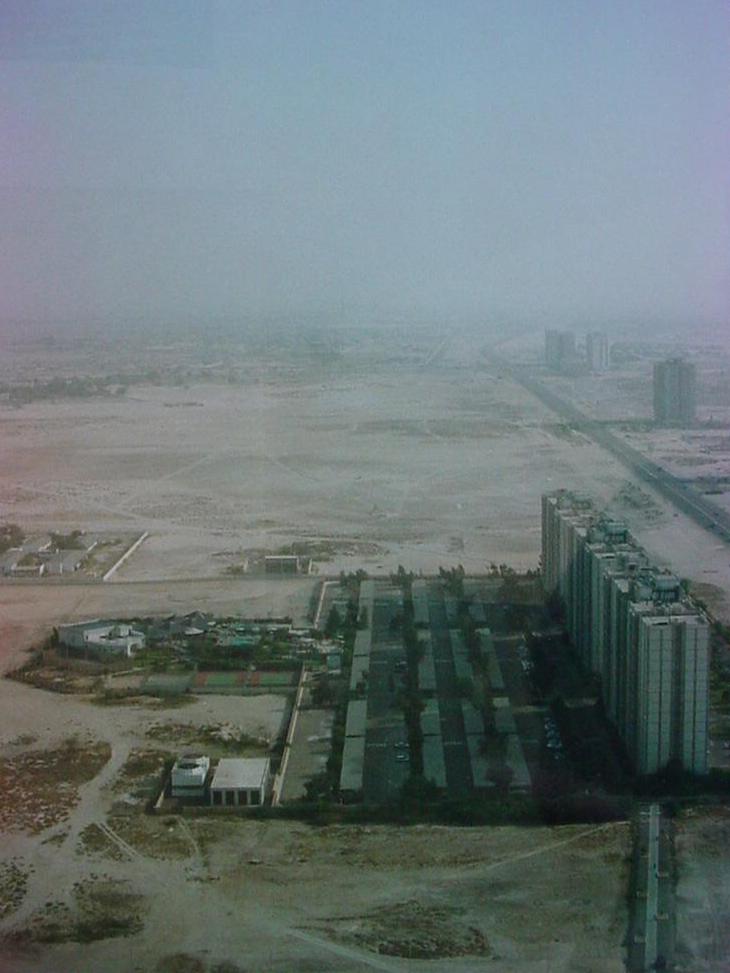
The view from the top of the Trade Centre in 1988, looking along what is now Sheikh Zayed Road towards Abu Dhabi. In the foreground are the Hilton Apartments (now the Trade Centre Apartments) and the large patch of sand behind them now hosts the iconic Emirates Towers.
The Dubai World Trade Centre was built in 1979 and was the tallest building in the UAE until completion of the Burj Al Arab nearly twenty years later. When this photo was taken it was the only skyscraper on Sheikh Zayed Road (then the Abu Dhabi Road), but it has since been joined by a host of canyon-forming towers. And yes in the foreground, that’s me.


Historically Dubai built up around the Creek, an inlet of the Persian Gulf that resembles a river, but peters out a few miles inland. Having been dredged and embankments built up, the Creek serves as a dhow wharfage for the ocean going wooden boats which ply the routes to Iran and India.
Then as now it’s possible to wander amongst the cargo brought in from and going out to the subcontinent, using methods largely unchanged for hundreds of years. This is the Bur Dubai side of the Creek at Shindagha.


Dubai Museum is hosted in Al Fahidi Fort, the oldest building in the city, constructed from coral in the late 18th century. It was converted into a museum around the time of the UAE’s independence from Britain in 1971, and has since been significantly extended underground to host many more exhibits on life in old Dubai and how the city has developed.
The Deira Corniche and the Hyatt Regency Hotel in 1988. The Hyatt Regency was built in 1980 and still hosts the only revolving restaurant in Dubai, at the seafront in Deira near the mouth of the Creek and the fish market. Then as now the building stands out on its own, but the corniche road has been completed in the meantime.

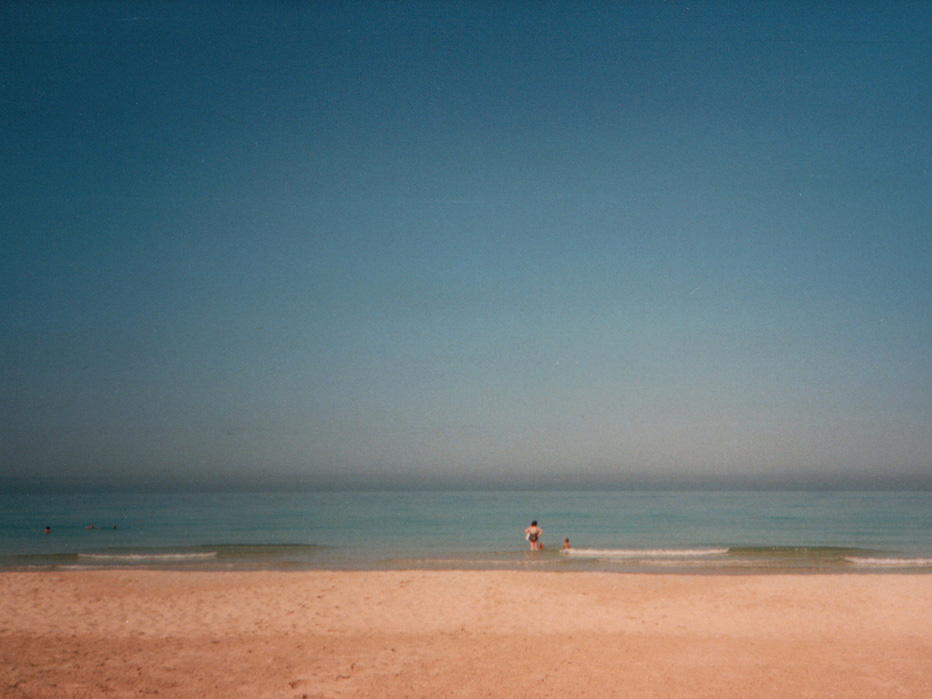
Back in the 1980s there were far more public beaches, and far fewer people to use them, hence scenes like this were not uncommon. The Persian Gulf is the warmest sea in the world, in summer it’s like stepping into a bath.
I lived with my family in a development called the Forty-Eight Villas in the district of Umm Suqeim; single storey pre-fabricated houses which were common across the city. Our house was number two, but since then they have been renumbered to fit in with the rest of the more recent surrounding developments.
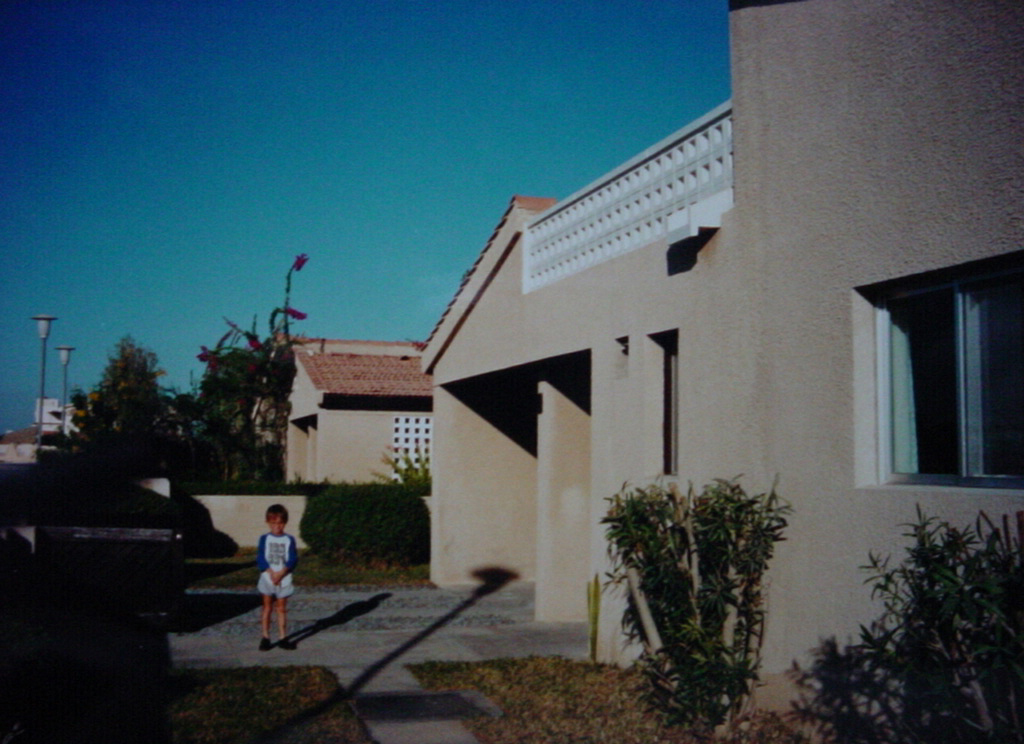

Across the road from our house in the 48s it was just scrubby sand all the way to the local Spinney’s – now the land is all developed and the Spinney’s is a Mexican restaurant.
We lived in Dubai due to my Dad’s work at Dubai Petroleum Company – which had the added benefit of pool access at the DPC office over the weekend.
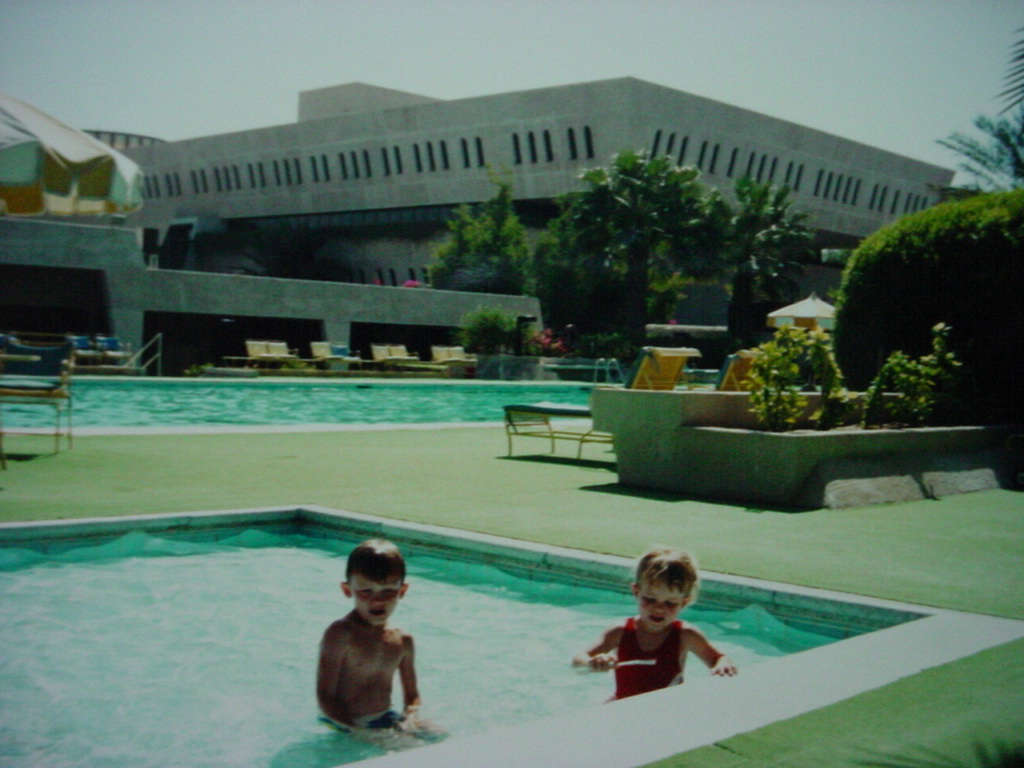
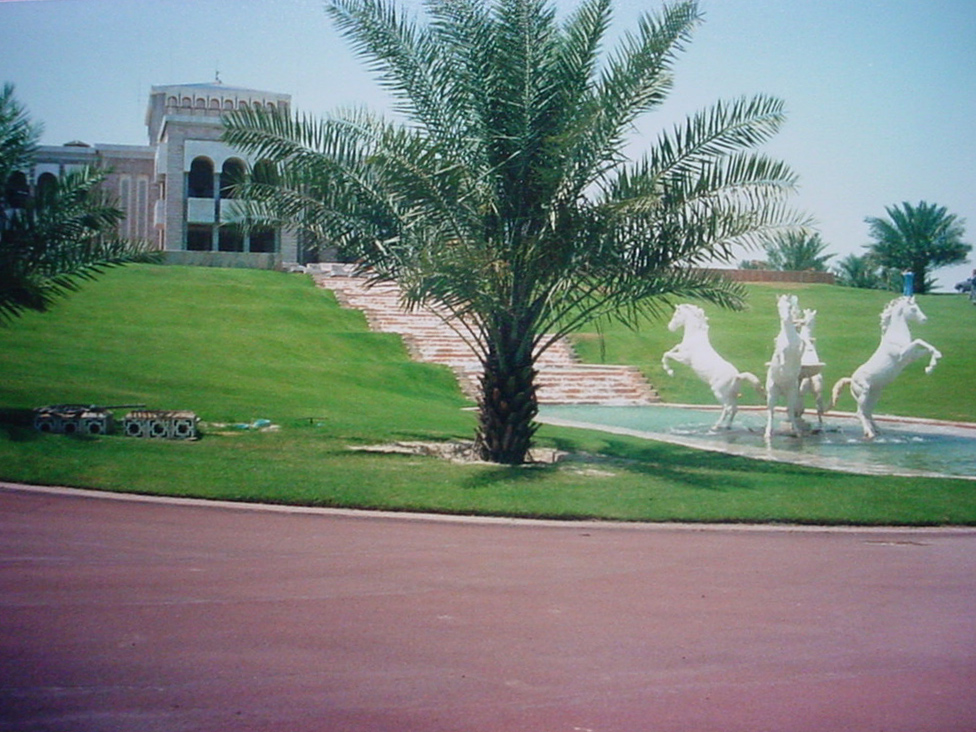
Occasionally the Sheikhs would open their palaces to the public, a great opportunity for a glimpse into their lifestyle and standard of living. This palace with the horse statues in the fountain is presumably one that belongs to Sheikh Mohammed.
A final shot of the desert landscape around Dubai. The sands in the city are ground white coral, and the further inland you go the darker red they become. Within the city much of the natural landscape has this scrubby desert brush growing on it. Spot the camel…

Created 2001 | Updated 2012
